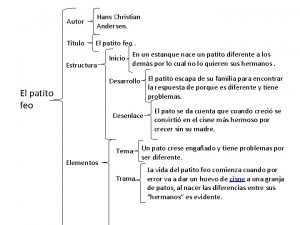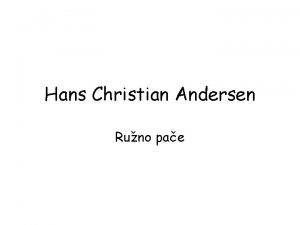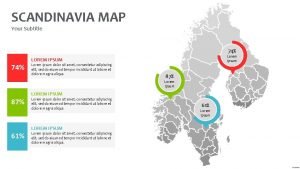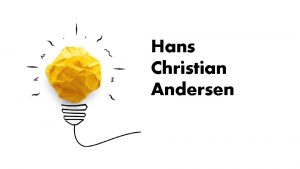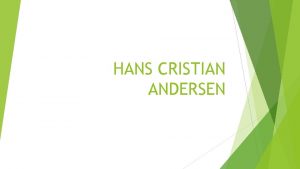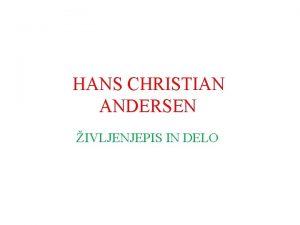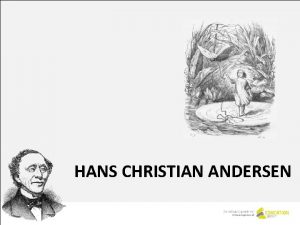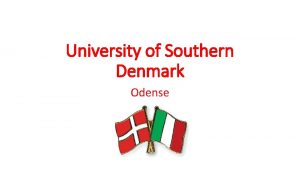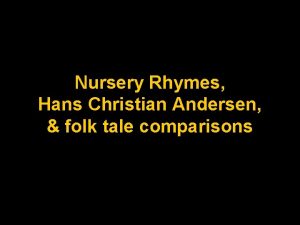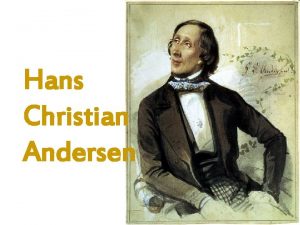Scandinavia Odense home town of Hans Christian Andersen




















- Slides: 20

Scandinavia Odense, home town of Hans Christian Andersen

Psychological Determinants of Obesity Presentation by Marianne Vámosi Post doc. , Ph. D. ,

Facts about overweight and obesity Worldwide • Worldwide obesity has more than doubled since 1980. • In 2008, more than 1. 4 billion adults, 20 and older, were overweight. • Of these over 200 million men and nearly 300 million women were obese. • 65% of the world's population live in countries where overweight and obesity kills more people than underweight. • More than 40 million children under the age of five were overweight in 2010. • . Obesity is preventable. BMI = Body Mass Index = weight (kg)/height (m)² Normalweight: 18. 5 ≤BMI<24, 9 Overweight defined as BMI ≥ 25 Obesity : BMI ≥ 30.

Overweight and obesity are among others responsible for: Hypertension Type 2 diabetes Metabolic syndrome Cardiovascular diseases Sleep apnoea Musculoskeletal disorders Mortality (Rössner 2002)

Consequences of obesity Social and economical consequences • Social rejection • Discrimination • Negative stereotyping • Personal economic and social costs • Low employment prospects, • Stigmatization • Social integration

Consequences of obesity Psychological consequences of obesity • Negative impact on quality of life • Negative impact on body image • Negative impact on psychological distress • Negative consequences for self-image • Negative consequences for self-esteem • Negative consequences for mood • Profound psychological costs

Causes of overweight and obesity Genetic predisposition (Perusse 2001) Environmental factors • Energy balance: • Energy intake • Physical activity (Rössner 2002) • Social and psychological factors: • Family environment • Psychosocial causes: present and in childhood (Astrup 2002)

Psychosocial factors in childhood related to weight gain in adulthood • • • Parental education Parental occupation Quality of dwelling School performance Difficulties in school Scholastic proficiencies below average Children who received special education Sleeping problems during early childhood Traumatic events in childhood Psychosocial stress Depression Abuse

Flow-chart for the individual twin participants

Subjects The criteria for participation in the present study were: 1. Twin pairs, MZ as well as DZ, who according to their answers to the Omnibus 2002 questionnaire were discordant of BMI, i. e. one twin should have a normal BMI (20. 0 kg/m² to 24. 9 kg/m²) and the co-twin should have a BMI ≥ 30. 0 kg/m². 2. The twins in a pair should be of the same sex. 3. All the participants should be between 20 and 50 years in 2002.

Methods • Contact to the participants • Preparing the interview • Accomplishment of the interview • • The questionnaire Clinical examination Blood sampling Statistical analysis

The questionnaire 1. The Omnibus-02 twin cohort questionnaire. Question No. one to 11. 2. The SF 12 Questionnaire. Question No. 12 to 22. 3. The perceived stress scale. Question No. 23 to 32. 4. The SOC 13 Questionnaire. Question No. 33 to 45. The Bully/Victim Questionnaire. Question No. 46 to 58. 6. Growth and height history. Question No. 59 to 71. 7. EDI-C. Questions on body shape body image and present eating habits. Question No. 72 to 89. 8. Questions about perception of own body shape. Question No. 90 and 91. 9. CECA. Q, parental care questionnaire. Question No. 92 to 145.

Results Descriptive statistics

The results from the growth- curve model of the BMI from the Bully and Victim questionnaire

The trend of proportions with increasing intra-pair comparison of BMI in 2006 Results from the CECA Q questionnaire 20 twin couples 19 twin couples 21 twin couples 39 twin couples

Discussion Strengths of the study in general: • High rate of participants: 81. 7 %. • The selected group of participants was based on 34. 944 twin individuals • The participants were analysed to be representative related to non participants • None of the participants reported been bullied or lack of parental care as causation for weight changes • The same interviewer accomplished all the interviews and the anthropometric measurements • The co- twin was not present at the interview

Being bullied in childhood • Participants bullied had a higher BMI with 1. 4 kg/m², than the non bullied participants. • The association could be measured from age 20 - 40 years. • Changes in life events could affect and decrease the association. • We included twin participants only if normal weight when starting school. • The twins in the same class? • The Bully/Victim-questionnaire is not defined bully as a concept. • The Bully/Victim-questionnaire has no score system. The biological relationship between bullied and overweight/obesity remains to be studied further.

Lack of parental care in childhood • There was found an association between obesity and maternal antipathy in the age of 20 and an association for maternal neglect in 2006 • • There was no significant results of the association between obesity/overweight and paternal care. • • This indicates that maternal care has an effect on BMI later on in life Why the difference between maternal and paternal care? The CECA Q questionnaire key words are well defined. The CECA Q questionnaire has its own cut- score system. The biological relationship between parental care and overweight/obesity remains to be studied further.

Future perspectives One of the aims of this study was to determine if being bullied and if the perception of parental neglect and care could be related to later overweight and obesity in adulthood. The analysis has shown that such associations could exist. The findings are important news in the keys to the enigma of obesity. Prevention must be a possibility and is needed. Treating overweight and obesity has not been an unconditional success, as after weight loss it is common to regain the lost weight. With this study, new pathways to avoid later obesity are being opened. The health care system, the GP’s, the professionals in the school system and kindergartens, but first of all the parents should be informed about the importance of psychological care and attention to the child in prevention of overweight and obesity.

Thank you so much for your attention!!
 Título
Título Ružno pače sporedni likovi
Ružno pače sporedni likovi Hans christian andersen prezentacja
Hans christian andersen prezentacja Muzeum andersena kopenhaga
Muzeum andersena kopenhaga Hans christian andersen award winners
Hans christian andersen award winners Andersen życiorys
Andersen życiorys Hans christian andersen steckbrief
Hans christian andersen steckbrief Bajke hansa kristijana andersena
Bajke hansa kristijana andersena Andersen - biografia dla dzieci
Andersen - biografia dla dzieci Hans skifter andersen
Hans skifter andersen Vladimir šumski
Vladimir šumski Hans cristian andersen
Hans cristian andersen Hans cristian andersen
Hans cristian andersen Sin values
Sin values Baal ishtar
Baal ishtar Scandinavia map powerpoint template
Scandinavia map powerpoint template Yokohama scandinavia ab
Yokohama scandinavia ab The physical geography of northern europe
The physical geography of northern europe Vikings vs danes
Vikings vs danes Other names for scandinavia
Other names for scandinavia The capital of scandinavia
The capital of scandinavia
